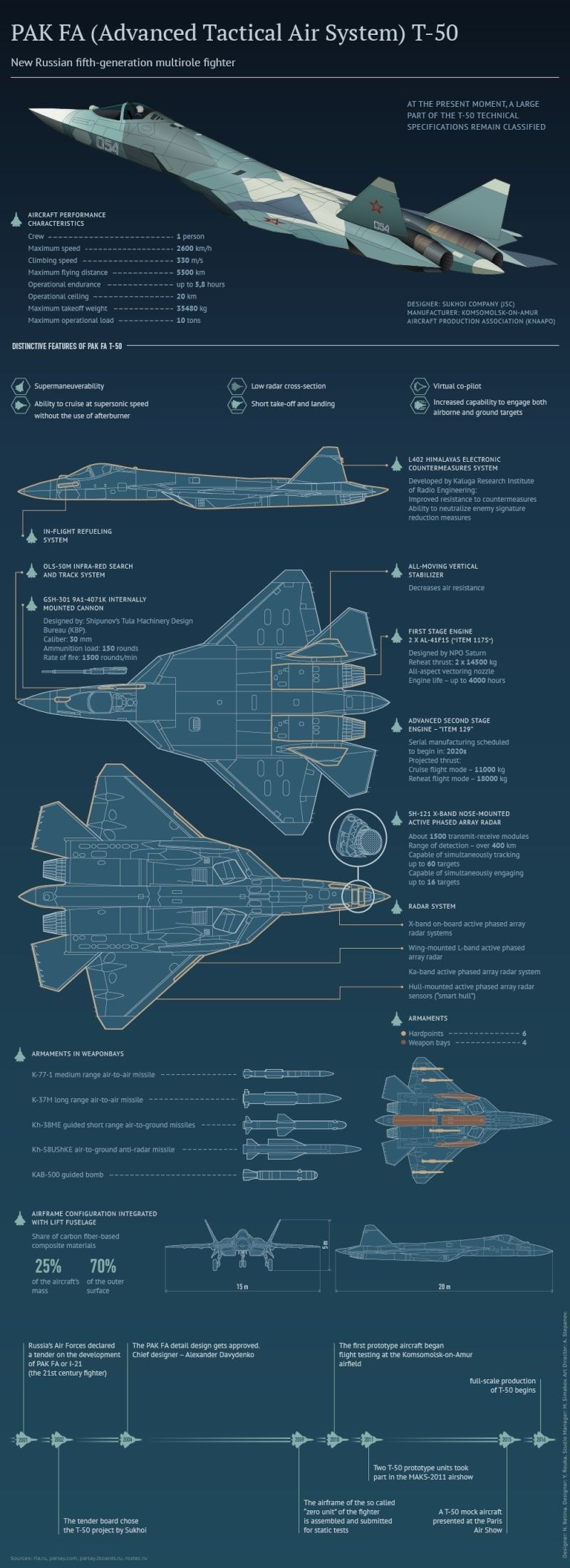Indian, Russian negotiators agree on FGFA development: Cost of project reduced to $4 billion each
The Indian Air Force (IAF), once an ardent backer of the proposed Indo-Russian fifth generation fighter aircraft (FGFA), has for the last two years sharply attacked the project. Critics say the FGFA is on the back burner to clear the way for the French Rafale fighter.
President Francois Hollande of France, who arrives in Delhi on Monday, has talked up the sale of 36 Rafales to India for an estimated $9 billion (Rs 60,000 crore).
Yet the FGFA remains alive. Last month Indian and Russian negotiators achieved a major breakthrough, agreeing to develop the FGFA at a lowered cost of $4 billion (Rs 27,000 crore) in India. That would open the doors to building of 250 FGFAs to replace the Sukhoi-30MKI.
Since 2008, the project was estimated to cost India and Russia $5.5 billion (Rs 37,000 crore) each. Adding inflation, that would be $6 billion (Rs 40,500 crore) each.
Now negotiators from Hindustan Aeronautics Ltd and Sukhoi - the development agencies; have agreed to do this 40 per cent more cheaply, for $4 billion spread over seven years. In the first year after signing, each side would pay $1 billion (Rs 6,750 crore), and another $500 million (Rs 3,380 crore) in each of the following six years.
Sukhoi is already test-flying the FGFA's precursor, which Russia calls the PAK-FA (Perspektivny Aviatsionny Kompleks Frontovoy Aviatsii, or "Prospective Airborne Complex of Frontline Aviation"). The FGFA project involves improving the PAK-FA significantly to meet the IAF's specifications. The IAF wants some 50 improvements to the PAK-FA, including a 360-degree radar and more powerful engines.
The proposal for a $4 billion research and development contract (R&D contract) will now come before a defence ministry "cost negotiation committee", and then to the Defence Minister Manohar Parrikar.
The R&D Contract visualises a prototype fighter flying in India within three years. In total, 11 prototypes would be built - eight of these PAK-FAs for the Russian Air Force, and three FGFAs for India.
Each country has already spent $295 million (Rs 1483 crore) on a "preliminary design contract" (PDC), Parrikar told parliament on August 4, 2015. The PDC, which spelt out the fighter's detailed configuration, was completed in June 2013.
The R&D contract should have followed immediately, but the IAF came out against the FGFA. As Business Standard reported (January 21, 2014, "Russia can't deliver on Fifth Generation Fighter Aircraft: IAF") top air marshals alleged during a high-level ministry meeting in New Delhi that the FGFA would fall short of Indian expectations.
According to the details of that meeting, IAF objections to the FGFA were: (a) The Russians would not share critical design information with India; (b) The PAK-FA's engines are inadequate, being mere upgrades of the Sukhoi-30MKI's engines; and (c) Paying $6 billion to co-develop the FGFA would mean that "a large percentage of IAF's capital budget will be locked up."
On January 15, the IAF renewed its attack in a ministry meeting meant to review FGFA progress. It said the FGFA's engine was unreliable, radar was inadequate; stealth features were poor, India's work share being too low, and the price being too high. In a letter to the ministry, the IAF vice-chief raised 27 different objections to the FGFA.
Yet, in a baffling volte-face last year, the IAF proposed the PAK-FA be bought over-the-counter, rather than co-developing the FGFA. There was no official response to questions over why the IAF was willing to buy a fighter it had roundly criticised.
This resistance to the co-development also scuppered a Russian offer to co-develop a more powerful, fifth-generation engine for the FGFA. After roundly criticising the PAK-FA's AL-41F1 engines - upgraded versions of the Sukhoi-30MKI's AL-31FP engines, with 25 per cent more power - the IAF was ready to buy them in an over-the-counter sale.
The FGFA was once the IAF's future. Former defence minister AK Antony rebuffed the US-built fifth generation F-35 Joint Strike Fighter, saying India would have the FGFA. Indian planners viewed the FGFA as a launch pad for India's fifth generation fighter, the Advanced Medium Combat Aircraft (AMCA).
Now, with the Rafale's astronomical cost, a cheaper R&D Contract for a "Make in India" FGFA could turn the spotlight back in the Indo-Russian fighter.




 Isos
Isos


